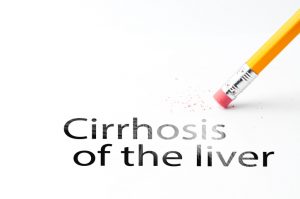
The liver is a vital organ in the body because of hundreds of functions it performs. Some of these functions include taking up and storing nutrients from food, making new proteins, producing bile, and removing waste products.
The liver is the only organ that can regenerate itself, but if scarring is severe, it is unable to heal, so it deteriorates over time. AS cirrhosis gets worse, the liver failure sets in.
Common causes of cirrhosis include alcohol, chronic hepatitis C, non-alcoholic fatty liver disease, non-alcoholic steatohepatitis, and chronic hepatitis B.
Complications of cirrhosis of the liver
Portal hypertension: Blood from the stomach, intestines, spleen, gallbladder, and pancreas is carried to the liver through portal veins. In cirrhosis, this normal blood flow becomes blocked, which increases the pressure on the portal veins.
Edema and ascites: Fluid buildup as a result of liver failure leads to edema and ascites. Ascites results in spontaneous bacterial peritonitis, which is a serious infection.
Varices: These are enlarged blood vessels as a result of portal hypertension. The enlarged blood vessels are more prone to bursting, which requires immediate medical attention.
Splenomegaly: This is when portal hypertension causes the spleen to enlarge and retain white blood cells and platelets in the blood.
Hepatic encephalopathy: Toxins that are not removed by the liver can build up in the brain. Known as hepatic encephalopathy, this condition can decrease mental function and even cause a coma.
Metabolic bone diseases: Bone strength can become diminished as a result of abnormalities in vitamin D, calcium, bone mass, bone structure, or phosphorus. The bones become weaker, resulting in osteoporosis and fractures.
Gallstones and bile duct stones: If bile cannot flow freely from the gallbladder, it can turn into gallstones.
Bruising and bleeding: When the liver stops producing proteins necessary for blood clotting, a person bruises easily.
Sensitivity to medications: The liver assists in the filtering of medications from the blood. If the liver cannot perform this function properly, the medication can work longer and build up in the body.
Liver cancer: Liver cancer is common in cirrhosis patients who should be checked routinely for early signs of tumors or cancer cells.
Other complications: Kidney failure, insulin resistance and type 2 diabetes, and heart problems.
If you have liver disease, particularly cirrhosis, it’s important you properly manage it to reduce the risk of complications.
Related: Can you live without a pancreas?